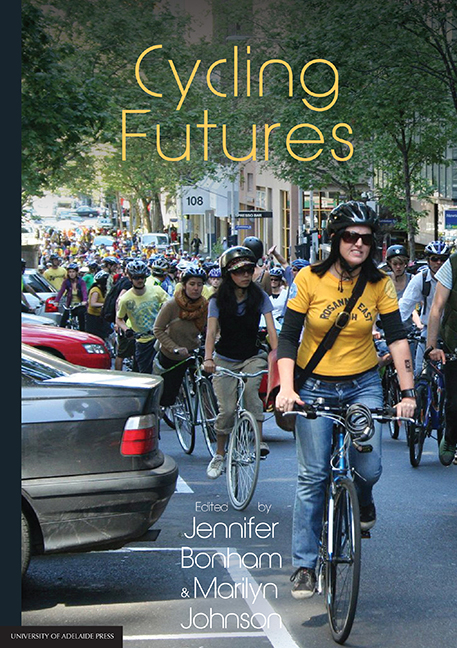Book contents
- Frontmatter
- Contents
- Preface
- Editors
- Contributors
- PART I Current challenges
- PART II Strategies for change
- 9 Gender and cycling: Gendering cycling subjects and forming bikes, practices and spaces as gendered objects
- 10 Making (up) the child cyclist: Bike Ed in South Australia
- 11 More than a message: Producing cyclists through public safety advertising campaigns
- 12 Spaces for cycling
- 13 Off-road cycling infrastructure
- 14 Teaching Australian civil engineers about cycling
- 15 What should planners know about cycling?
- 16 Skilling landscape architects and urban designers for design of bicycle parking and network facilities
- 17 Cycling and Australian law
16 - Skilling landscape architects and urban designers for design of bicycle parking and network facilities
from PART II - Strategies for change
Published online by Cambridge University Press: 25 July 2017
- Frontmatter
- Contents
- Preface
- Editors
- Contributors
- PART I Current challenges
- PART II Strategies for change
- 9 Gender and cycling: Gendering cycling subjects and forming bikes, practices and spaces as gendered objects
- 10 Making (up) the child cyclist: Bike Ed in South Australia
- 11 More than a message: Producing cyclists through public safety advertising campaigns
- 12 Spaces for cycling
- 13 Off-road cycling infrastructure
- 14 Teaching Australian civil engineers about cycling
- 15 What should planners know about cycling?
- 16 Skilling landscape architects and urban designers for design of bicycle parking and network facilities
- 17 Cycling and Australian law
Summary
Introduction
It will be clear from preceding chapters that the issues around planning and design for sustainable cycling futures are complex and multilayered, requiring input and collaboration from a number of different professions. This chapter addresses the knowledge and skills required by landscape architects and urban designers for best practice design at the beginning and end of cycling journeys, to improve the cycling experience and encourage greater participation in all forms of cycling. It will also consider cycle network design, and demonstrate the core contribution to be made by the two disciplines of landscape architecture and urban design as part of the collaborative, multidisciplinary approach. The chapter provides practical assistance to urban designers and landscape architects who are unfamiliar with designing for cycling. It extracts and further develops key concepts from the plethora of design codes and standards available. The chapter, read in conjunction with Chapter Fifteen by Wendy Bell and Donna Ferretti in this volume, will also assist planners when advising developers on cycling requirements and carrying out development assessment, as well as project managers responsible for the timely completion of developments.
Landscape architecture has evolved as a profession with a wide-ranging scope, having concern for the health, sustainability and relationships between humans and the natural and built environment. A key feature of landscape architecture is the integration of technical and scientific knowledge with cultural, social and aesthetic sensibilities. Central to the discipline is site planning, a cyclical, unbounded process that builds knowledge to inform the preparation of the plan. Along with the physical site survey and analysis, landscape architects must navigate a network of social decisions and continually monitor, evaluate and revise plans as necessary. They must respond to and manage different viewpoints and potential conflicts between the participants. Despite this, and the many factors to be considered in site planning, cycling has rarely, and only cursorily, been mentioned in the site planning literature dealing with transport issues.
- Type
- Chapter
- Information
- Cycling Futures , pp. 357 - 406Publisher: The University of Adelaide PressPrint publication year: 2015



